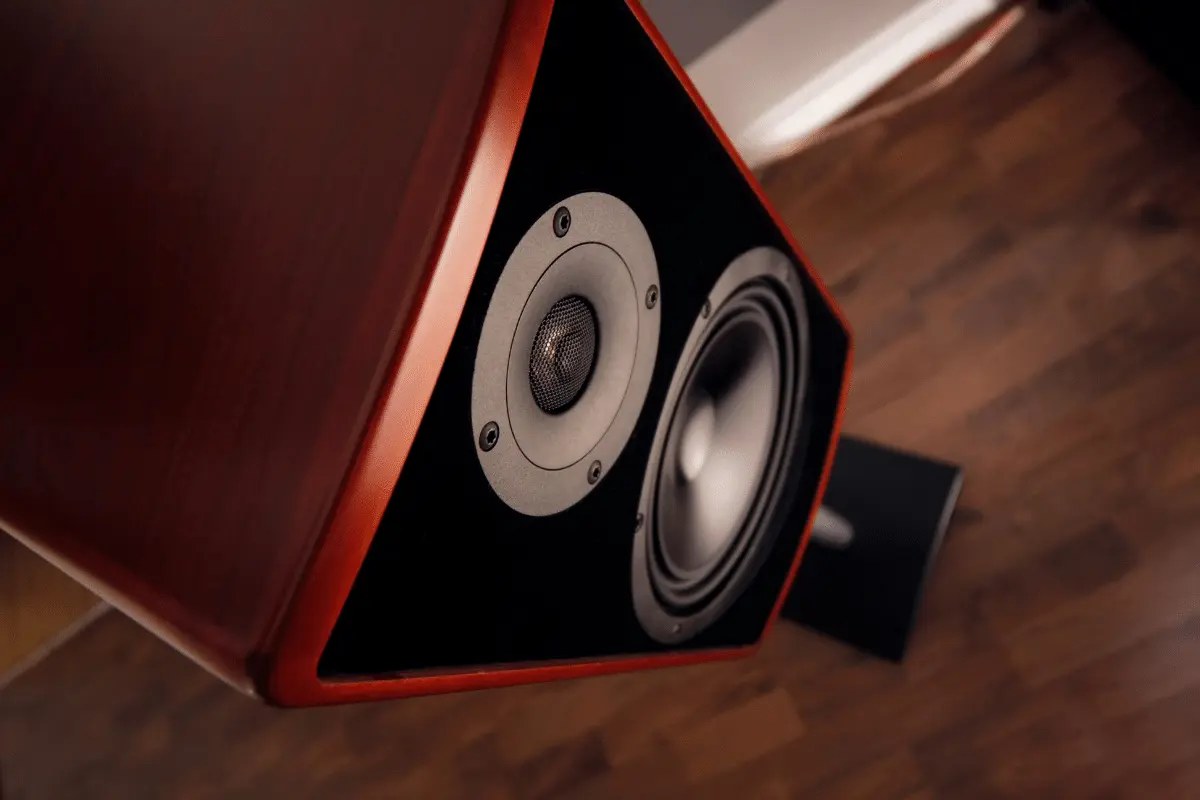Headphones are an essential part of our daily lives. Whether you’re commuting, working out, or relaxing at home, headphones provide an immersive listening experience.
However, not all headphones are created equal. One key factor that affects the sound quality of your headphones is the type of cable they use.
Headphone cables can be categorized into two types: balanced and unbalanced. While both cables have their advantages and disadvantages, it’s important to understand the differences between them to make an informed decision when choosing your next pair of headphones.
In this blog post, we’ll dive into the world of balanced vs unbalanced headphone cables and explore how they affect the sound quality of your favorite tunes.
We’ll also discuss which type of cable is best suited for different headphone applications and help you decide which option is right for you.
So sit back, relax, and let’s explore the world of headphone cables!
Defining Balanced and Unbalanced Headphone Cables
When it comes to headphone cables, there are two types: balanced and unbalanced.
As previously discussed, balanced cables use a three-wire setup with two audio conductors per channel and a ground wire, while unbalanced cables only have two wires – the ground wire and a single signal wire.
The difference between the two lies in how they carry audio signals and their effectiveness in reducing noise and interference.
In this article, we will explore the benefits and drawbacks of both types of cables and how to choose the right one for your headphones.
So, let’s dive in and explore the world of balanced and unbalanced headphone cables.
The Difference between Balanced and Unbalanced Headphone Cables
In this section of the blog, the focus will be on the differences between balanced and unbalanced headphone cables.
As previously discussed, balanced cables use a four-conductor layout with two audio signals and an additional ground wire, while unbalanced cables only have two wires.
The main advantage of a balanced headphone cable is its ability to deliver cleaner, distortion-free sound over long cable runs, which is crucial for professional audio applications.
On the other hand, unbalanced cables are more common for home use and offer the convenience of compatibility with most audio devices.
However, they are more prone to picking up unwanted noise and are limited in their ability to carry high-quality audio signals over long distances.
Overall, the choice between a balanced or unbalanced cable depends on the listener’s personal preference and the intended use of the headphones.
The Importance of Cable Length in Professional Audio Applications
In professional audio applications, cable length plays a crucial role in achieving high-quality audio output.
This is especially true for balanced audio cables, which are designed to transmit audio signals over long distances.
Unlike unbalanced cables, which have a single conductor carrying the audio signal, balanced cables have two conductors, positive and negative, which cancel out any noise picked up during transmission.
This means that balanced cables can support much longer cable runs without compromising audio quality.
In professional settings, where audio equipment is spread out over large areas or between different rooms, balanced audio cables are the preferred choice.
However, it’s important to note that cable length can affect the level of impedance, which can impact audio performance.
Therefore, it’s crucial to carefully consider the length of the cable and the type of connection needed to ensure the best possible audio outcome.
Structure of Unbalanced Headphone Cables
The structure of unbalanced headphone cables is relatively simple compared to balanced ones.
Unbalanced headphone cables only have two wires which are the ground wire and a single signal wire.
These types of headphones cables are commonly used in consumer-level audio electronics such as MP3 players, smartphones, and laptops.
The ground wire is responsible for minimizing any external noise that may interfere with the audio transmission.
On the other hand, the signal wire carries the audio signal from the source to the headphones.
Despite its simplicity, unbalanced cables are a popular choice for headphones since they provide satisfactory audio performance at an affordable price point.
However, in professional audio applications, balanced cables are favored for their higher sound quality and noise-cancellation features.
Structure of Balanced Headphone Cables
One of the key differences between balanced and unbalanced headphone cables is their structure.
Balanced cables operate using a stereo audio layout with four different conductors, while unbalanced ones only have two wires- a ground wire and a single signal wire.
Balanced headphone cables typically use a three-wire setup, with two signal wires and a shield.
The inner conductors are made up of many thin individual wires twisted around each other to provide better noise reduction, and the cables are usually close to 110Ω in impedance.
While the structure of balanced headphone cables may be more complex, they offer significant advantages over unbalanced cables in terms of audio performance and noise reduction.
In professional audio applications where cable length is an issue, balanced cables are often the preferred choice.
Choosing the right cable for your headphones depends on a number of factors, but understanding the differences between balanced and unbalanced cables is an important first step.
Advantages of Balanced Headphone Cables
Balanced headphone cables offer several advantages over their unbalanced counterparts.
One of the main benefits is their ability to reduce interference and noise, delivering a cleaner audio signal with better clarity and detail.
Additionally, because they use three wires, balanced cables provide a more stable connection and can handle longer cable runs without signal degradation.
They also offer enhanced channel separation and a wider dynamic range, making them ideal for critical listening and professional audio applications.
While they may be slightly more expensive than unbalanced cables, the improved audio performance is definitely worth the investment for audiophiles and professionals who demand the best quality sound.
Choosing a balanced headphone cable can truly enhance the listening experience, and it’s important to consider the advantages and disadvantages of both options before making a decision.
Disadvantages of Unbalanced Headphone Cables
Unbalanced headphone cables have a few disadvantages that are worth noting. One of the biggest issues with unbalanced cables is their susceptibility to noise interference.
As the cable length increases, the potential for unwanted noise to seep into the audio signal increases as well.
This can ultimately lead to distortion and degradation of the audio quality. Additionally, unbalanced cables only have one signal wire, which means that they have a limited capacity to transmit audio signals.
This can result in a less dynamic and detailed sound than what can be achieved with a balanced cable system.
Despite these drawbacks, unbalanced cables can still deliver impressive audio performance, and they may be more affordable and widely available than their balanced counterparts.
Ultimately, it’s up to the user to determine which type of cable best suits their needs based on a variety of factors like budget, purpose, and personal preferences.
Audio Performance Comparison between Balanced and Unbalanced Headphone Cables
In terms of audio performance, balanced headphone cables generally provide better sound quality than unbalanced ones.
This is because balanced cables utilize two conductors for each channel, allowing for less noise and interference.
The signal is mirrored and reversed on one of the conductors, which cancels out any interference that may have been present.
Unbalanced cables, on the other hand, only have one conductor per channel, which can lead to more noise and lower signal strength, especially over distance.
However, for shorter distances, unbalanced cables may actually provide a stronger signal.
Ultimately, the choice between using a balanced or unbalanced headphone cable will depend on individual needs and preferences, but it’s always important to consider the length of the cable, as well as the potential for signal degradation or interference.
Choosing the Right Cable for Your Headphones
When it comes to choosing the right cable for your headphones, it’s important to consider your specific needs and preferences.
If you’re using your headphones for professional audio applications or listening to high-quality music at home, balanced cables may provide better performance and lower noise levels.
However, if you’re using your headphones for everyday listening or casual gaming, unbalanced cables may suffice.
And if you already have a pair of headphones with an unbalanced cable, it may not be worth the expense and effort to switch to a balanced cable.
Ultimately, the decision comes down to your personal preferences and the specific demands of your audio setup.
Conclusion: Finding the Right Balance between Balanced and Unbalanced Headphone Cables
In conclusion, finding the right balance between balanced and unbalanced headphone cables is crucial in achieving optimal audio performance.
While both types of cables have their advantages and disadvantages, it ultimately boils down to the specific application and personal preference.
Professionals in the audio industry often prefer balanced cables because of their ability to eliminate noise and interference over longer distances, as well as their improved overall audio experience.
However, for regular consumers, unbalanced cables may suffice, especially for shorter cable lengths.
It is important to choose the right cable for your headphones based on your specific needs and budget to prevent signal loss and ensure the best possible audio experience.





Leave a Reply
You must be logged in to post a comment.